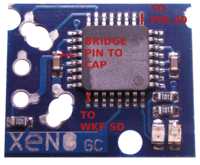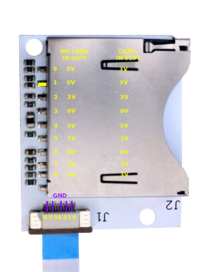Difference between revisions of "Xeno Fusion"
Jump to navigation
Jump to search
Megalomaniac (talk | contribs) |
Megalomaniac (talk | contribs) |
||
| Line 11: | Line 11: | ||
'''theory:''' use the atmega 8 on the xenogc modchip to trigger a response required for the WKF to initialize iso loading.<br> | '''theory:''' use the atmega 8 on the xenogc modchip to trigger a response required for the WKF to initialize iso loading.<br> | ||
'''proof of concept:''' haha, no proof to show yet, but initial testing promises good results <br> | '''proof of concept:''' haha, no proof to show yet, but initial testing promises good results <br> | ||
| − | |||
| − | |||
| − | |||
| − | |||
| − | |||
| − | |||
| − | |||
| − | |||
| − | |||
| − | |||
| − | |||
| − | |||
| − | |||
| − | |||
| − | |||
| − | |||
| − | |||
| − | |||
| − | |||
| − | |||
| − | |||
| − | |||
| − | |||
| − | |||
| − | |||
| − | |||
| − | |||
| − | |||
| − | |||
| − | |||
| − | |||
| − | |||
| − | |||
| − | |||
| − | |||
| − | |||
| − | |||
| − | |||
| − | |||
| − | |||
| − | |||
| − | |||
| − | |||
| − | |||
| − | |||
| − | |||
| − | |||
| − | |||
| − | |||
| − | |||
| − | |||
| − | |||
| − | |||
| − | |||
| − | |||
| − | |||
| − | |||
| − | |||
| − | |||
| − | |||
| − | |||
| − | |||
| − | |||
| − | |||
| − | |||
| − | |||
| − | |||
| − | |||
| − | |||
| − | |||
| − | |||
| − | |||
| − | |||
| − | |||
| − | |||
| − | |||
| − | |||
| − | |||
| − | |||
| − | |||
| − | |||
| − | |||
| − | |||
| − | |||
| − | |||
| − | |||
| − | |||
| − | |||
| − | |||
| − | |||
| − | |||
| − | |||
| − | |||
| − | |||
| − | |||
| − | |||
| − | |||
| − | |||
| − | |||
| − | |||
| − | |||
| − | |||
| − | |||
| − | |||
| − | |||
| + | [[File:XenoFUSION pinout.png|200px]] [[File:WKF slot voltage.png|200px]]<br> | ||
Revision as of 18:25, 27 March 2013
....this page is under destruction

|
|---|
Main
concept: use a xenogc modchip in tandem with wiikey fusion drive replacement
theory: use the atmega 8 on the xenogc modchip to trigger a response required for the WKF to initialize iso loading.
proof of concept: haha, no proof to show yet, but initial testing promises good results

